Jie Chi
Discriminating Form and Meaning in Multilingual Models with Minimal-Pair ABX Tasks
May 23, 2025Abstract:We introduce a set of training-free ABX-style discrimination tasks to evaluate how multilingual language models represent language identity (form) and semantic content (meaning). Inspired from speech processing, these zero-shot tasks measure whether minimal differences in representation can be reliably detected. This offers a flexible and interpretable alternative to probing. Applied to XLM-R (Conneau et al, 2020) across pretraining checkpoints and layers, we find that language discrimination declines over training and becomes concentrated in lower layers, while meaning discrimination strengthens over time and stabilizes in deeper layers. We then explore probing tasks, showing some alignment between our metrics and linguistic learning performance. Our results position ABX tasks as a lightweight framework for analyzing the structure of multilingual representations.
The Role of Prosody in Spoken Question Answering
Feb 08, 2025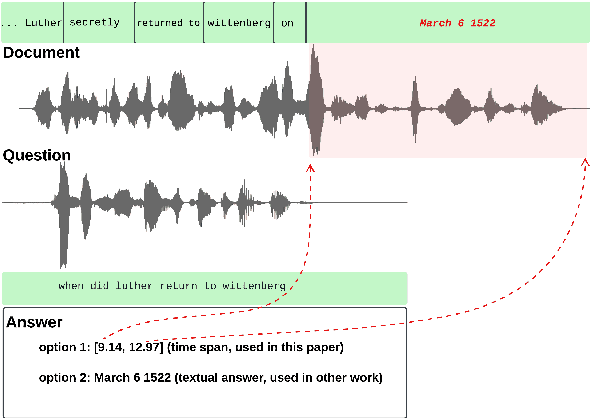
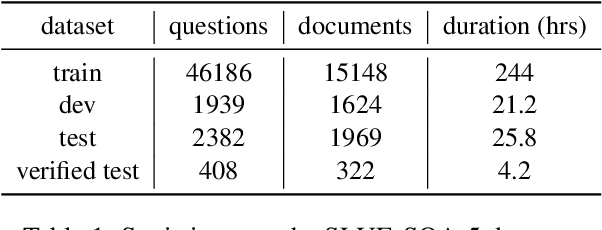
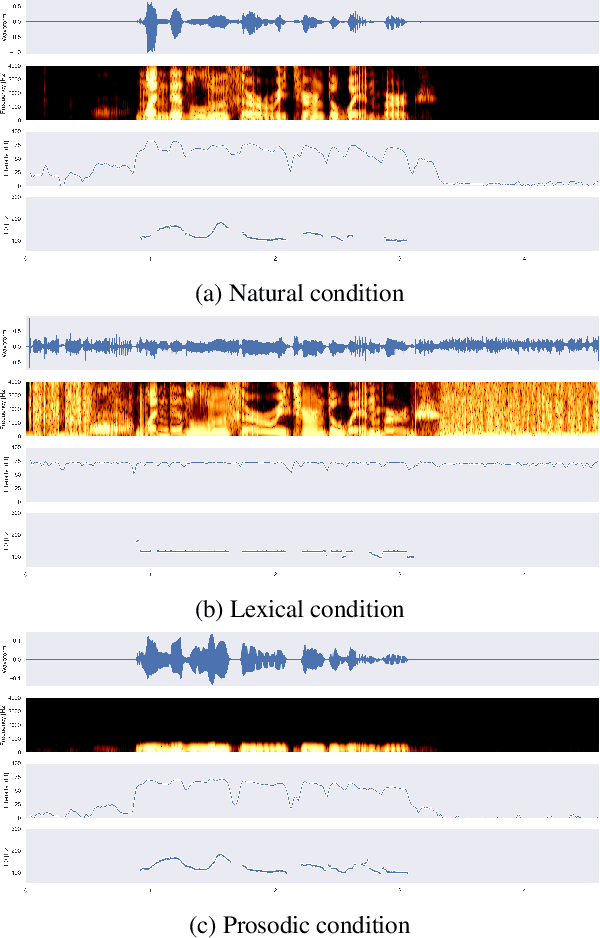
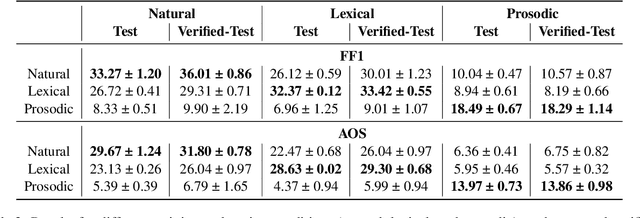
Abstract:Spoken language understanding research to date has generally carried a heavy text perspective. Most datasets are derived from text, which is then subsequently synthesized into speech, and most models typically rely on automatic transcriptions of speech. This is to the detriment of prosody--additional information carried by the speech signal beyond the phonetics of the words themselves and difficult to recover from text alone. In this work, we investigate the role of prosody in Spoken Question Answering. By isolating prosodic and lexical information on the SLUE-SQA-5 dataset, which consists of natural speech, we demonstrate that models trained on prosodic information alone can perform reasonably well by utilizing prosodic cues. However, we find that when lexical information is available, models tend to predominantly rely on it. Our findings suggest that while prosodic cues provide valuable supplementary information, more effective integration methods are required to ensure prosody contributes more significantly alongside lexical features.
Querent Intent in Multi-Sentence Questions
Oct 18, 2020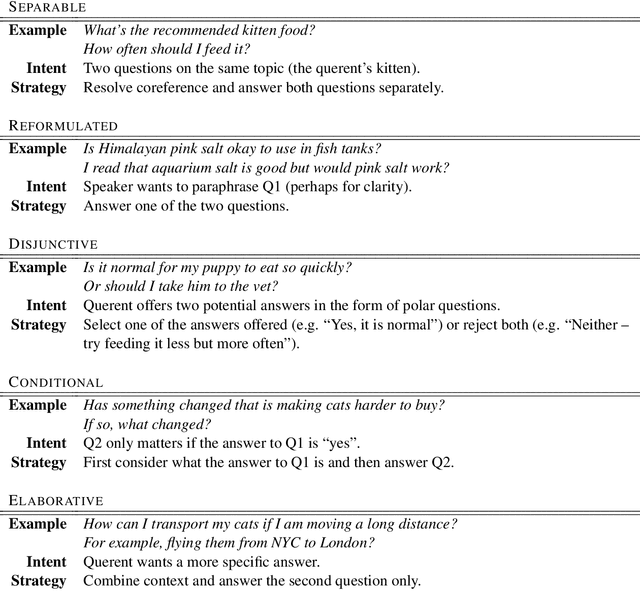
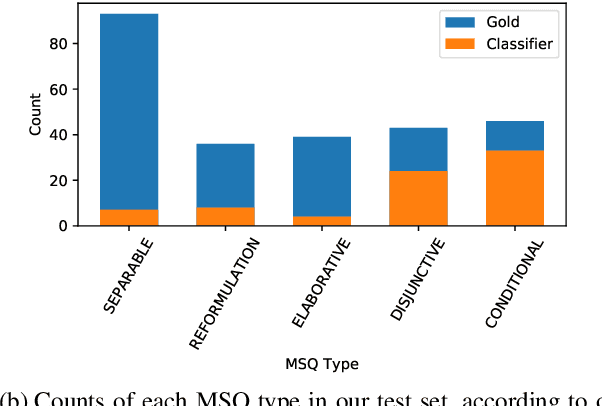
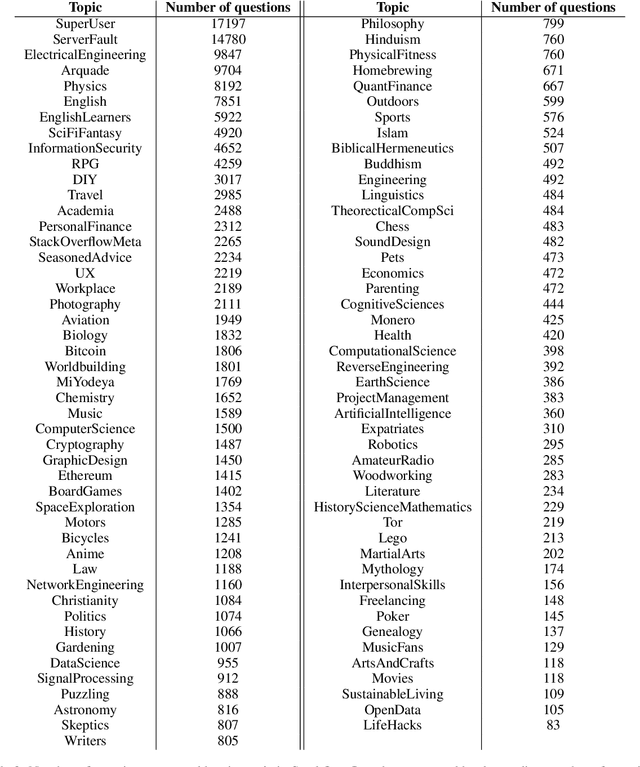

Abstract:Multi-sentence questions (MSQs) are sequences of questions connected by relations which, unlike sequences of standalone questions, need to be answered as a unit. Following Rhetorical Structure Theory (RST), we recognise that different "question discourse relations" between the subparts of MSQs reflect different speaker intents, and consequently elicit different answering strategies. Correctly identifying these relations is therefore a crucial step in automatically answering MSQs. We identify five different types of MSQs in English, and define five novel relations to describe them. We extract over 162,000 MSQs from Stack Exchange to enable future research. Finally, we implement a high-precision baseline classifier based on surface features.
 Add to Chrome
Add to Chrome Add to Firefox
Add to Firefox Add to Edge
Add to Edge